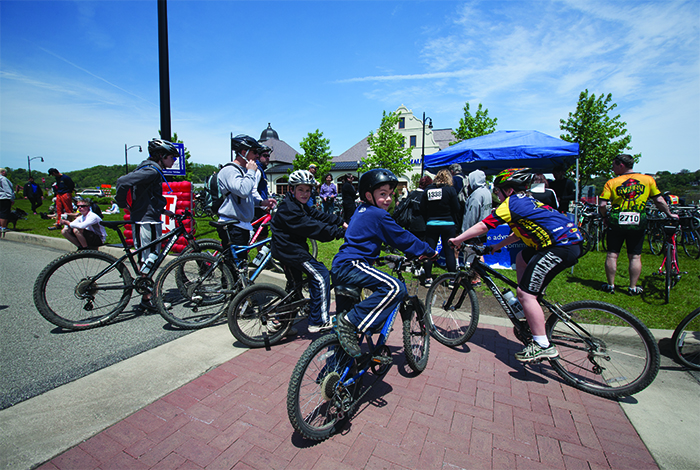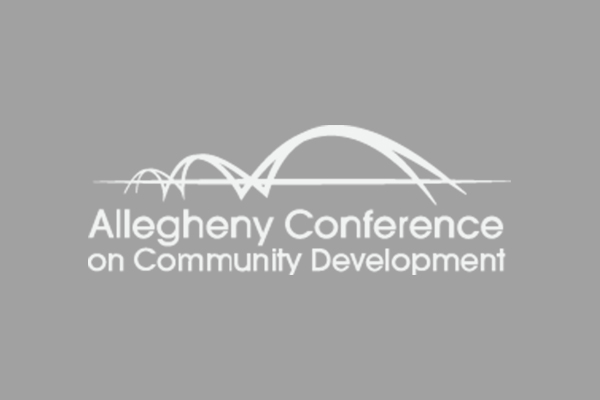
The statistic was quoted so often that most people never thought to check if it was actually the truth. “Allegheny County has the oldest population of any county in the United States except Dade County, Florida”. While the rate of one person in five over the age of 60 was one of the highest for major cities, Pittsburgh’s demographics were the same as other Northern or Midwestern cities that experienced industrial declines – Buffalo or Cleveland for example – and Allegheny County wasn’t as old as a number of retirement Mecca’s.
Pittsburgh wasn’t West Palm or Scottsdale and the city had a real problem with insufficient opportunities to attract people in their early to peak working years. The shutdown of the steel industry and its supply chain resulted in hundreds of thousands leaving the area to find better employment opportunities. Leaders who were realistic predicted that it would take a generation of effort to recover from the outmigration. That forecast turned out to be correct.
A generation has now passed and the good news is that the most recent census and updates show that the median age of the residents of Pittsburgh and much of the region is declining. It shouldn’t be a surprise that the economy of the region has recovered at the same time, providing jobs that young people previously had to look elsewhere to find.
Pittsburgh is getting younger. The city is also on the radar of those who look for places that are on the leading edge of things. Pittsburgh is suddenly “cool” in the same way that Portland or Austin is considered cool. The efforts of many political administrations and civic leaders have paid off in the 21st Century, as emerging technology companies and re-emerging natural resources industries are creating demand for workers with the skills that well-educated and trained younger people possess.
Proving Out the Census
Pittsburgh’s loss of young workers and families didn’t require a report from the Census Bureau to prove. A drive through the towns in the Mon Valley or Beaver Valley provided all the evidence anyone would need. Because the recovery of the regional economy took a different shape than the economy that existed in Western PA prior to 1980, you couldn’t go to towns like Charleroi or Beaver Falls and see offices and stores filling back up.
As population returned, people moved to where their jobs are located or from where they can conveniently get to their jobs. The recent resurgence of urban living in Pittsburgh is concurrent with a national trend towards living in cities; however, that trend has been abetted here by the fact that the job creating engines – universities, hospitals, financial institutions – are located in Downtown Pittsburgh and in Oakland. If you look at the previous housing trends – which were suburban – you see the pattern of proximity to jobs. The housing boom in the North Hills in the 1980’s and 1990’s followed the opening of I-279. The growth in the western suburbs followed the boom in suburban office growth and the heyday of USAir at the airport.
Between 1995 and 2005, more than 45,000 housing units were built in our six-county metropolitan area. It’s possible that the decline in population may have abated by that time and the Census Bureau’s estimates hadn’t accounted for that yet, but at minimum the growth in new homes demonstrated the shift in population from the city to the suburbs.
Regardless of the degree of decline and rebound in population that occurred over the past few decades, it’s evident now that the face of the region looks different. There is no comparison between what places like Market Square, East Liberty or Lawrenceville look like today versus just a few years ago. The anecdotal evidence we see with our eyes tells us that there are more people, younger people and people with more disposable income out and about than before. The data backs up that observation. According to the 2012 Census update, the median age of U. S. residents went up again by two-tenths of a point to 37.4 years since 2010. Likewise, the median age of Pennsylvanians rose from 40.1 to 40.5 years old during that time. Compare to 1980, the median ages went up 7.4 and 8.4 years respectively in the country and state.
In Pittsburgh, conversely, the median age declined from 2010 to 2012, falling two-tenths to 33 years old. The median age of Allegheny County residents fell from 41.3 to 41 years old. Like with the state and U. S. demographics, the median age for Allegheny County increased significantly since 1980, matching the 7.4 years that the average American aged. The median age in Pittsburgh, however, was virtually the same. After climbing from 32.8 years in 1980 to 35.5 in 2000, the median age in Pittsburgh returned again a dozen years later. Given the direction of the trend, it’s likely that the 2014 update will find Pittsburgh residents are younger now than 30 years ago. What is remarkable about the shift is that Pittsburgh’s trend is counter to the national and global trend.
When you look at the data from year-to-year, it’s apparent that there have not been big moves in either direction. The largest increase in any year since 1990 was 9,054 (or 0.4 percent) and the largest decline was 14,634 (or 0.6 percent). Examining the components of the population trend gives a bit more clarity, especially into how the region’s age is declining.
Throughout the period, the one constant has been that the natural order of change has been remarkably consistent. “Deaths still outnumber births,” notes Jim Futrell, vice president of market research and analysis for the Allegheny Conference. That difference averaged 3,286 more deaths over the past dozen years, with every year having between 2,500 and 4,000 more deaths, except 2003. Net foreign immigration was even more consistent than the death rate, averaging 2,243 during the past 12 years. What has changed is the flow of domestic movement.
Until 2009, net outmigration occurred every year, averaging 6,500 more people leaving than moving to Pittsburgh. From 2009 to 2012, over 2,200 more people moved to Pittsburgh than left it and the makeup of those coming was decidedly younger.
In addition to getting younger, Pittsburgh is also getting smarter, or at least better educated. While the educational attainment of Pittsburghers of all ages is roughly the same as that of the rest of the country – we have slightly more high school grads and fewer dropouts – the educational attainment of 25-34 year olds is significantly higher. The share of residents with a bachelor’s degree is more than five points higher than the U.S. average; and the share of Pittsburghers with graduate degrees is 13.6 percent versus the U. S. average of 9.3 percent. Moreover, the change in population of those in Pittsburgh who have graduate degrees and are between 25 and 34 years old is 50.8 percent since 2000.
PNC economist Kurt Rankin sees the business environment as a key to the latter statistic. “Pittsburgh has had the university base that normally attracts younger workers. That hasn’t changed over the years,” Rankin explains. “The start-up and tech base – Google and other technology companies – has grown and allowed those younger people to stay and work.”
Coming and Staying for the Jobs
During the decades of reconstructing and rebranding what Pittsburgh was, much was done to make the lifestyle of the region more attractive. The cleanup of the rivers and air quality – a result of dedicated individuals and a lack of manufacturing – improved the quality of life. Investment in the Cultural District created a destination in Downtown and was at the beginning of a wave of lifestyle amenity additions that put Pittsburgh in a league with other attractive cities. All these incremental improvements helped with the attraction and retention of younger workers but in the end, the tipping point was the growth of jobs that required the skills that 25-to-35 year olds possessed.
As Rankin points out, the magnet has been technology. Whether from the transfer of university research into commerce or through the application of new technology to existing economic drivers like healthcare, it has been technology at the heart of the new Pittsburgh economy. Because the epicenter of the tech economy was Oakland’s universities, the City of Pittsburgh has benefitted most from this job growth.
With New Urbanism becoming a dominant trend reviving city living, the emergence of a job-creating engine in the heart of Pittsburgh is not only attracting talent to the region, but also to the city itself.
Bruce Katz, Brookings Institute vice president of the Metropolitan Policy Program, spoke of this convergence when he visited Carnegie Mellon University. Katz believes that there is a shift underway throughout the country that stems from the way business fosters innovation. Whereas companies primarily did innovation in suburban research and development settings – like the Research Triangle Park near Raleigh-Durham, NC – industry leaders now look to open collaboration that thrives on proximity of its employees and supply chain. The density of an urban setting better serves the 24/7 innovation culture that exists at the best companies today.
The changes in workplace dynamics of which Katz speaks play into the regional strengths of Southwestern PA. The cost of living in Pittsburgh is relatively low, especially when compared to the markets from which companies in the region are recruiting. Cities that attracted tech companies in the 1990’s – Palo Alto, San Francisco, Boston – are much more expensive than Pittsburgh to live. Today’s workplace doesn’t require proximity for workers or even companies to take advantage of synergies with their industry and customers. At the risk of belaboring the Google example, the company’s location in Pittsburgh was recognition of the talent available at Carnegie Mellon and the more affordable lifestyle of the city. In half a decade, Pittsburgh has become Google’s third largest employment center.
Of course, the other industry driving employment in Western PA is natural gas exploration and processing. While not specifically attractive to younger workers alone, the nature of the work is like construction’s and therefore draws younger workers.
The need for technical education and skills has grown among employers faster than the educational system has responded with training. As an indicator of this trend, some 23,000 jobs remain unfilled in the 14-county region, according to the Pittsburgh Regional Alliance’s (PRA) tracking of openings. Some 57 percent of those jobs are in high tech companies or IT within other industries. Those are opportunities that more often than not are filled by younger people. In other cities, those are also the kinds of jobs that attract skilled foreign immigrants.
The hottest jobs are what will continue to attract young people to the region that domestic in-migration won’t be enough.
The fact that there are unfilled jobs is not unique to Pittsburgh. Cities like Milwaukee or Cleveland have the same problem. Everyone sees the same answer and that’s foreign immigration. We need to have a federal policy that allows for more higher-skilled workers to immigrate to this country. In par t that’s a concern. In part it needs to be a wakeup call for our educational institutions. A lot of these jobs don’t require college educations. We’ve just had a mismatch between what we need and what we’ve been educating our workforce to do.
Twenty years ago, the concern about Pittsburgh was that there weren’t enough jobs to get young people to stay here after college. Today, job creation has begun to outstrip the demographics.
Playing Out the Trend
What does “getting younger” mean for the future of Western PA’s economy? It’s important to remember that while the median age is declining in the center of the region’s population, there are still lots of people getting older in place.
“There are three main demographic waves coming through. The first is the Baby Boomers, which is so much bigger than any previous group,” explains Dr. Shelby Stewman, professor of sociology and demographics at Carnegie Mellon University. Stewman notes that the Boomers’ size, wealth and lifestyle expectations have affected everything in American culture over the past 50 years. Nearly 76 million Americans were born during the Baby Boom between 1946 and 1964. That age cohort still makes up one quarter of the total population and their actions and expectations have enormous influence on the economy.
As Boomers begin to retire in greater numbers over the next decade or so, there will be two major impacts on the economy as a result. One is that the healthcare-related costs associated with aging and dying will rise and the size and expectations of the Boomers will put enormous pressure on those systems. The second impact will be the loss of workers from the retirement of the biggest generation. Since the Baby Boom was followed by a decade of lower birth rates, this wave of retirements will be followed by a cohort that already represents a hole in the workforce. The size of that hole is estimated to be 140,000 workers.
The latter impact is significant for Pittsburgh because it is the age group that would take up the place of the Baby Boomers that moved away during the 1980’s in the wake of the steel industry’s collapse. By the middle of the next decade, Pittsburgh should offer plenty of employment opportunity.
The third wave of the demographic sea is another large one, the Echo Boom or the children of the Baby Boomers. There is ample early evidence that this cohort will behave differently as adults than their parents did.
Shelby Stewman predicts another change that will be a departure for this region. “I think people in the region are going to be in for a surprise when the birth rates rise again,” he says. “We have had a delay in the child bearing period but when you look at the Echo Boomers, they’re out there.”
Stewman predicts that Echo Boomers may push back having children for a while but that the numbers eventually catch up to the trend. He points out that the birth rate has been stable at between 1.7 and 1.9 children per family for almost 40 years. During the 20th Century, the highpoint for birth rate was 1957, when 3.8 children per family were born; and the trough occurred in 1976 when the rate was 1.74 children per family. By 1980, the rate was 1.8 and in 2007 it was 1.9. When the second largest generation born in this country passes through its child bearing years over the next two decades, Stewman predicts another rise in newborns, even with a stable birth rate.
Babies born since the end of the recession will be leaving high school in 2030. What will the economic landscape of Pittsburgh look like for them?
There seems to be some big trends emerging from the shifting demographics. By 2030, the last of the Baby Boomers will have hit the traditional retirement age. Many of the people that would be filling in behind the Boomers left town with the steel industry; so a kind of reverse Diaspora will be needed or there will be increased opportunities for workers in their 30’s and 40’s to have more responsibility. If the reemergence of manufacturing occurs as predicted, Pittsburgh will be a city with lots of jobs across a broad spectrum of industries, most of which will rely on a steady stream of younger, well-trained workers.
While most of the country will be struggling with economic stagnation that could result from having nearly a quarter of the population retired and dependent upon consuming savings or government-backed support, the economy of Western PA has the potential to be expanding and searching for younger and smarter workers.
“There are jobs open to be filled and you’re going to have to go to a younger workforce to fill those positions. Baby boomers have maybe ten more years to work and over the course of ten years this city is going to change dramatically in its age.”
“Those prime earning years – early-30’s to mid-40’s – you can’t have growth in that group without establishing that base of young workers. We’re establishing that base in Pittsburgh,” says Rankin. “The big takeaway is that ten years out, Pittsburgh has the potential for a big income boost.” mg











